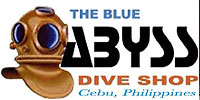
Many known dive spots in the world are artificial man-made reefs, which give shelter and are a solid base for certain marine animals.
The known Reef-balls have been used at many places, and with success. I only noticed that making the casting moulds for these structures is difficult when living or working in remote areas.
Many times I have been thinking about a simple way to make a structure which can be used endlessly, easy to make, and transport.
So thats how I came to the idea of Myreefplates, a solid base for certain corals to grow on, and a shelter once mounted on each other.
They are made from reinforced concrete, so all the effort will be enjoyed for a long time.
Myreef plate 1.
Hight: 60 cm. or 23,62 inch.
Length: 120 cm. or 47,22 inch.
Depth: 7 cm. or 2,75 inch.
Central hole: 20 cm. or 7,87 inch,
the bottom of an old bucket will do.
Side cut-outs: 8 cm. or 3,14 inch. wide and 10 cm. or 3,93 inch. deep.
Total weight: 104,16 Kg. using 10 mm. reinforcement steel frame.

Myreef plate 2.
Hight: 60 cm. or 23,62 inch.
Length: 226 cm. or 88,97 inch.
Depth: 7 cm. or 2,75 inch.
Central holes: 20 cm. or 7,87 inch.
Side cut-outs: 8 cm. or 3,14 inch. wide and 10 cm. or 3,93 inch. deep
Total weight: 187 Kg. using 10 mm. thick steel bar! 
There are many different ways to make a casting mould. The nicest and cheapest way is to make a mould with rough wooden planks. This gives the outside of the concrete a rougher structure,
and makes it more easy for marine life to get a grip on the concrete. Make a mould which you can bolt together, as shown on the photograph below.
The casting mould must be strong enough, so it lasts to make many tablets. Make sure that the metal you use to reinforce stays within the concrete. This is partly for safety reasons, and to avoid a quick rust process.
When using a bucket for making the central hole, put some weight in it so the concrete does not push it up. After pouring the concrete in the mould, make the mould to vibrate by tapping it for a while so the air inside the concrete comes out.
Implant 1mm thin metal wiring that will stick out 10 cm. on both sides of the tablet, this will help you to attach coral fragments to the reef plates. Do inform yourself, not every coral can be replanted.
Normally the coral will have set itself on the concrete before the wiring will break because of rust. Also the narrow spaces in between the plates, can be used to plant coral.
-Hold the plates upwards for transport.
-The central hole and cut-outs can be used to attach lifting balloons so you are able to control the descent and positioning.
-After mounting some plates vertically on each other, concrete lids from 3 cm. thick can be made to slide within the structure to create darker hiding places.
-Give the plates at least two weeks to dry, and clean them well before you bring them to their final destination.










